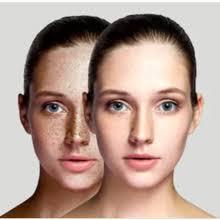Melasma Causes in Women: Understanding the Hormonal Triggers

Melasma is a stubborn skin condition that occurs most frequently in women and appears as brown or gray-brown patches on the face, commonly on the cheeks, forehead, nose, and upper lip. Although anyone can develop melasma, it is especially common in women. Through this blog, we will discuss what causes melasma in women and recommend which facility offers the best pigmentation treatment in Gurgaon.
Hormonal Changes
The primary cause of melasma in females is hormonal changes involving estrogen and progesterone. These are essential reproductive hormones that cause melanin-producing cells (melanocytes) to produce higher densities of pigment and subsequently can lead to the dark patches of melasma. This is why melasma often worsens due to:
-
Pregnancy: Frequently referred to as the "mask of pregnancy," melasma is commonly seen in women during the late stages of pregnancy when estrogen and progesterone are at their peak levels.
-
Birth Control Pills and Hormone Replacement Therapy: Women taking birth control pills can develop melasma.
-
Menstrual Cycle and Menopause: Changes in hormone levels during menstrual cycles can cause melasma flare-ups. In some women, the reduction and imbalance of estrogen and progesterone along with luteinizing hormone (LH) during menopause can result in melasma.
Other factors include:
-
Sun Exposure: Ultraviolet (UV) rays from sunlight are one of the principal stimulants that can exacerbate melasma. UV light stimulates the melanocytes (which are highly sensitive to hormonal changes) to produce more melanin and possibly deepen the patches and make them difficult to treat.
-
Genetics: A family history of melasma increases an individual's chances of developing pigmentation.
-
Stress: Prolonged stress can result in elevated cortisol—the 'stress' hormone. Increased cortisol can disrupt hormones and increase levels of melanocyte-stimulating hormone (MSH), both of which can increase melanin production.
-
Disorders Associated with Thyroid: Thyroid disorders, including hyperthyroidism and hypothyroidism, can also create disorders that lead to melasma.
-
Cosmetics: Various skin care products can worsen melasma in women.
Are you also dealing with melasma? Book a consultation with Dr. Niti Gaur, a leading skin doctor, to get an effective treatment. She offers a range of treatments for pigmentation, such as photofacials, chemical peels, laser treatment, and many more. Pigmentation treatment cost in Gurgaon at the clinic ranges from Rs. 5,000 to Rs. 35,000. To get the exact price, visit the clinic now.
- Art
- Causes
- Crafts
- Dance
- Drinks
- Film
- Fitness
- Food
- Giochi
- Gardening
- Health
- Home
- Literature
- Musica
- Networking
- Altre informazioni
- Party
- Religion
- Shopping
- Sports
- Theater
- Wellness


